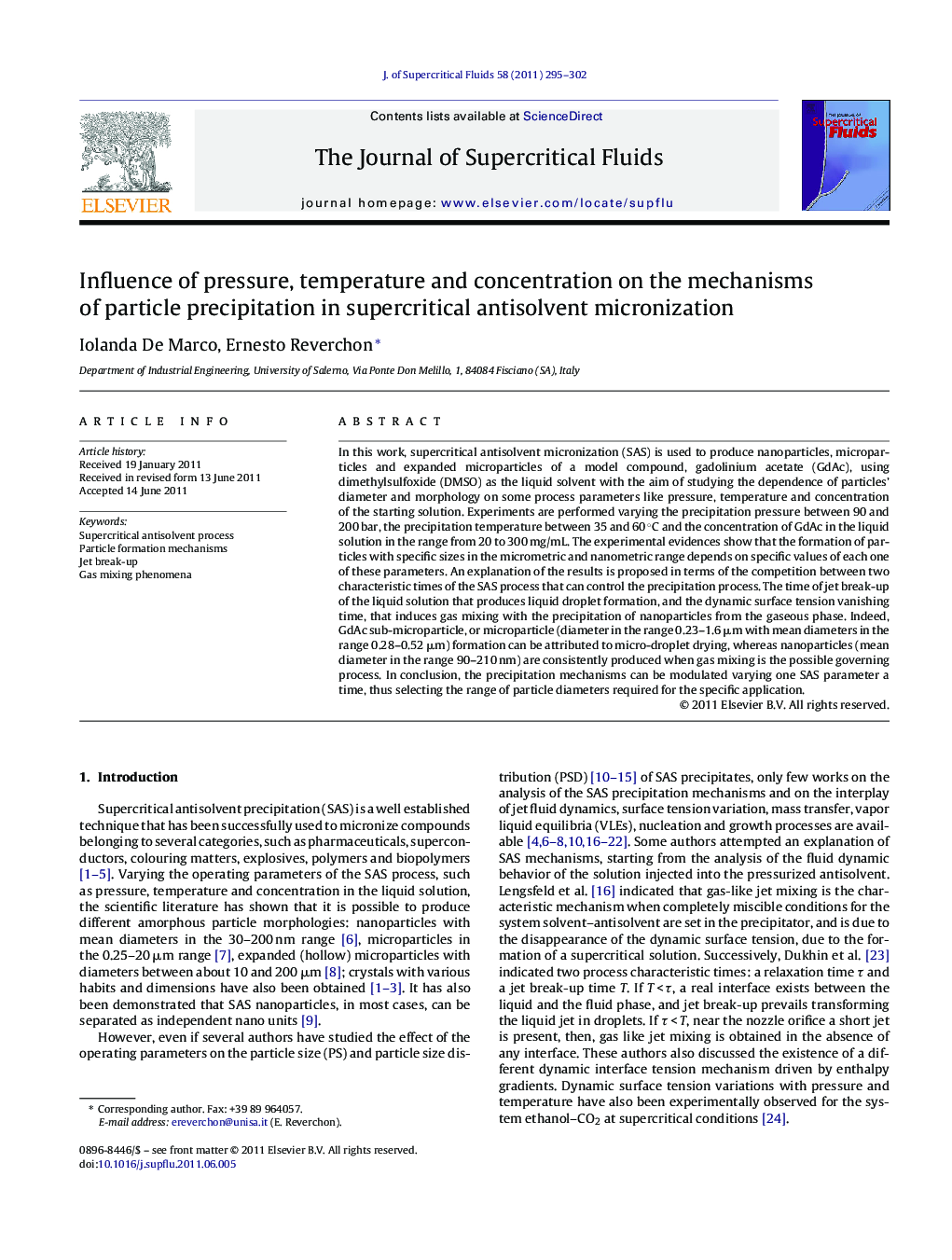| کد مقاله | کد نشریه | سال انتشار | مقاله انگلیسی | نسخه تمام متن |
|---|---|---|---|---|
| 231178 | 1427420 | 2011 | 8 صفحه PDF | دانلود رایگان |

In this work, supercritical antisolvent micronization (SAS) is used to produce nanoparticles, microparticles and expanded microparticles of a model compound, gadolinium acetate (GdAc), using dimethylsulfoxide (DMSO) as the liquid solvent with the aim of studying the dependence of particles’ diameter and morphology on some process parameters like pressure, temperature and concentration of the starting solution. Experiments are performed varying the precipitation pressure between 90 and 200 bar, the precipitation temperature between 35 and 60 °C and the concentration of GdAc in the liquid solution in the range from 20 to 300 mg/mL. The experimental evidences show that the formation of particles with specific sizes in the micrometric and nanometric range depends on specific values of each one of these parameters. An explanation of the results is proposed in terms of the competition between two characteristic times of the SAS process that can control the precipitation process. The time of jet break-up of the liquid solution that produces liquid droplet formation, and the dynamic surface tension vanishing time, that induces gas mixing with the precipitation of nanoparticles from the gaseous phase. Indeed, GdAc sub-microparticle, or microparticle (diameter in the range 0.23–1.6 μm with mean diameters in the range 0.28–0.52 μm) formation can be attributed to micro-droplet drying, whereas nanoparticles (mean diameter in the range 90–210 nm) are consistently produced when gas mixing is the possible governing process. In conclusion, the precipitation mechanisms can be modulated varying one SAS parameter a time, thus selecting the range of particle diameters required for the specific application.
Figure optionsDownload as PowerPoint slideHighlights
• Nanoparticles, microparticles and expanded microparticles produced by SAS.
• Competition between jet break-up time and surface tension vanishing time.
• Effect of pressure, temperature and concentration on particle mean diameter and particle size distributions.
Journal: The Journal of Supercritical Fluids - Volume 58, Issue 2, September 2011, Pages 295–302